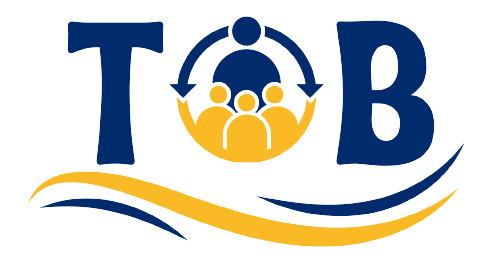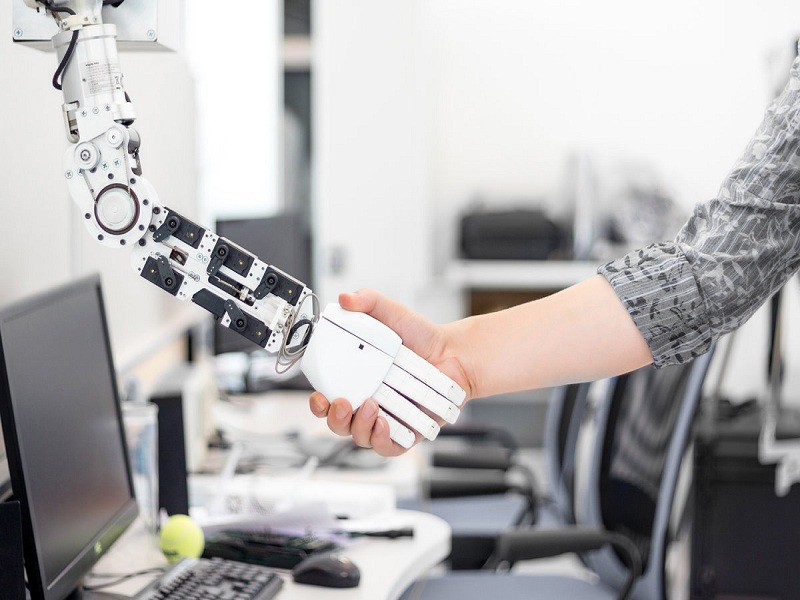A branch of computer science called artificial intelligence (AI) strives to build intelligent machines that can think and behave like people. It entails the creation of algorithms and systems that can think, analyse, and decide in ways that resemble human cognition.
There are several different varieties of AI, including strong or general AI, intended to accomplish any intellectual task that a human can, and narrow or weak AI, designed to execute a single task. Examples of AI are machine learning, natural language processing, robotics, and computer vision.
By automating repetitive jobs so that people can concentrate on more complicated and creative work, AI has the potential to completely transform a wide range of industries, including healthcare, education, finance, and transportation. Depending on how it is created, developed, and applied, AI has the potential to be both a friend and a foe.
Advantages of AI
AI has the potential to be a strong tool that can assist people in solving complicated issues, increase productivity, and improve many aspects of our life. AI can be used, for instance, to create new drugs, identify diseases, increase crop yields, and improve supply networks. Artificial intelligence (AI) has a wide range of possible benefits, including:
Increased Efficiency
Efficiency could be improved in several ways with artificial intelligence (AI).
Automating tasks is one way AI can improve productivity. For instance, a system using artificial intelligence (AI) may scan and analyse vast amounts of data, freeing humans to concentrate on more challenging and creative tasks.
AI can be employed to improve procedures and systems. For instance, an AI system may assess supply chain activity data and suggest adjustments to increase efficiency.
Improved Decision-Making
Artificial intelligence (AI) can enhance decision-making by accurately and swiftly evaluating vast volumes of data. This can be extremely helpful when people may need more time or resources to study the relevant data independently.
AI programmes can be taught to spot patterns and base their predictions on such patterns. For instance, an AI system could analyse a company’s sales and marketing data, which would then recommend how best to spend resources for optimal effectiveness.
AI can also be used to simulate many situations and assess the possible consequences, assisting decision-makers in taking a broad view and reaching more informed conclusions.
Enhanced Accuracy
AI systems can improve accuracy by automating operations and procedures that are prone to human error. For example, an AI system may scan and evaluate data, lowering the possibility of human error.
AI programmes may be taught to spot patterns and anticipate outcomes with high accuracy. For instance, an AI system might be used to evaluate medical data, predict patient results, or spot significant health problems.
Improved Customer Service
AI chatbots and virtual assistants can help companies offer better customer service by addressing queries and supporting clients in real-time. These AI-powered systems can be taught to comprehend and reply to client requests and questions in real time, giving clients prompt and accurate answers to their queries.
AI can also evaluate client data and offer customers individualised suggestions or solutions. For instance, a customer’s past purchases could be analysed by an AI system to suggest comparable goods or services they might like.
Improved Healthcare
Artificial intelligence (AI) systems can be trained to examine medical photos and find patterns that point to particular diseases. In particular, for rare or complex illnesses, this can aid doctors in providing a more precise diagnosis.
AI can be employed to anticipate patient outcomes and improve treatment protocols. For instance, an AI system may examine information on a patient’s health history, lifestyle, and other variables to forecast the likelihood of a specific outcome and suggest the best course of action.
Enhanced Safety
AI can improve safety by creating autonomous systems like self-driving cars and drones. These systems can be configured to adhere to safety regulations and steer clear of collisions, lowering the possibility of accidents and fatalities.
AI can also enhance safety in several industries, including manufacturing, transportation, and construction. AI algorithms, for instance, can be used to examine equipment maintenance and usage data to spot potential safety hazards before they arise.
AI can be utilised to increase decision-precision makings in safety-critical situations. For instance, an AI system may be used to evaluate weather data and forecast the risk of a natural disaster, assisting emergency personnel in better-allocating resources.
Disadvantages of AI
AI also creates ethical and societal issues, such as the necessity for effective regulation and control and the possibility of employment displacement. Additionally, there are worries about the possibility of AI being utilised for evil intent, such as propaganda or cyberattacks. Additionally, there may be drawbacks to artificial intelligence (AI), such as:
Job Displacement
Automation and artificial intelligence (AI) have the potential to replace some jobs and functions that can be carried out by robots more effectively. However, they also hold the potential to boost productivity across a range of industries and produce new jobs.
AI and automation can affect employment in various ways, both positively and negatively. First, AI and automation can help firms increase their productivity and efficiency, stimulating the economy and creating new jobs. For instance, technology can relieve employees of menial duties so they can concentrate on higher-value work that needs human judgement and creativity. Additionally, AI can enhance decision-making and assist firms in making better judgements, increasing productivity and profitability.
On the downside, automation and AI can potentially replace some occupations, especially those that need repetitive operations that are simple to automate. Some employees may lose their jobs due to this, and there may be a time of adjustment while impacted employees look for new jobs or retrain for different positions. Governments and corporations must take the initiative to address the possible effects of AI and automation on employment through programmes and retraining initiatives that assist people in adjusting to new technologies and gaining new skills
Bias
Bias in AI algorithms can happen in various ways, including through the data used to train the algorithm, the program’s design, or the application of the algorithm.
The data used to train AI systems is one manner in which they may be prejudiced. An AI algorithm may produce biased decisions if the data used to prepare it is not representative of the entire population or is prejudiced in some other way. For instance, if an AI algorithm is taught on data that primarily consists of men, it can make biased judgements when used on a population that mainly consists of women.
AI algorithms may be biased if employed in a limited way or created with biased assumptions. For instance, if an algorithm used to forecast a person’s chance of committing a crime has assumptions about some groups of individuals being more likely to commit crimes than others, it may be biased. Similarly, if an algorithm is used to choose job candidates in a way that favours some candidates over others, it may be limited.
Lack of Transparency
AI systems can lack transparency in many ways. For example, AI algorithms may use complicated or proprietary methods that are challenging for outsiders to comprehend or inspect, which is one manner in which they may need more transparency. Because of this, it may be challenging for users to understand the algorithm’s decision-making process and to spot any potential biases or operational flaws.
Because they may use a lot of data and do several computations, AI algorithms may also need more transparency because it may be challenging for users to comprehend how the algorithm comes to its conclusions.
Due to the difficulty of contesting or appealing the algorithm’s decisions, this can be particularly troublesome when the algorithm is used to make crucial judgements, such as in the criminal justice system or hiring.
Finally, AI algorithms must be thoroughly verified and assessed before deployment to have transparency. Due to this, it may be challenging to determine the algorithm’s accuracy and fairness or to spot any potential biases or inaccuracies.
Security Risks
AI systems are susceptible to security concerns such as cyberattacks. Numerous methods in which artificial intelligence (AI) can be employed in cyberattacks. Automating the process of identifying and exploiting vulnerabilities in computer systems is a frequent usage of AI in cyberattacks. For instance, an AI programme may be taught to search the internet for weak points before attacking those systems.
AI can be employed to develop more sophisticated and focused attacks. AI may be used, for instance, to evaluate information about a specific person or group and produce customised spear-phishing emails that are more likely to dupe the target into disclosing sensitive information or downloading malware. Data breaches may come from this. Data breaches can affect you in various ways, including loss of personal details, monetary loss, reputational damage, emotional suffering, etc.
AI is a tool that thieves can employ to steal identities. Identity theft is when someone accesses another person’s accounts or commits other crimes using that person’s personal information, such as name, address, date of birth, or financial information, without that person’s consent. The creation of fictitious names, addresses, and other pieces of personal information by AI algorithms could be used to create false or stolen identities.
The use of AI algorithms to acquire personal data from numerous websites, including social media, online forums, and other websites, could be used to construct false identities or to access people’s accounts. An identity theft protection service is available here. If your personal information is leaked online, this will help you. In addition, if there are any dangers to your identity, it will let you know so you can always protect it.
Costs
Many resources, such as data scientists and other specialist staff. as well as computational resources like servers and storage, are frequently needed while developing an AI system. As a result, the cost of acquiring and maintaining these resources might be high. Additionally, training an AI system can be a resource-intensive operation because it frequently demands data and processing power.
An AI system must be installed and deployed after it has been created, which might be expensive. This could entail renting or buying the necessary software and hardware and establishing and maintaining the system’s supporting infrastructure.
Dependence
There is concern that relying too heavily on AI systems may cause users to lack critical thinking abilities. This worry is frequently expressed in relation to automation. when people may grow dependent on AI systems to complete work or make judgements and may lose the capacity for independent problem-solving or critical thought.
Some evidence supports idea that relying too much on AI systems may result in a decline in critical thinking abilities. For instance, studies have revealed that users of GPS navigation systems may find it more challenging to locate their way without the device and may be less likely to remember the path they took. Similarly, individuals who utilise AI-powered language translation tools might be less likely to pick up a second language or retain the vocabulary and grammar they have learnt.
It’s critical to carefully weigh AI’s possible benefits and drawbacks and develop and apply the technology ethically and responsibly. This could entail taking legal action, defining moral standards for the creation and application of AI, and putting protective mechanisms in place to counteract any unfavourable effects.
Conclusion:
AI must be created and used ethically and responsibly, emphasising maximising the positive effects for society while limiting any potential harmful effects. This necessitates constant communication and cooperation between experts in AI, decision-makers, and the general public.

